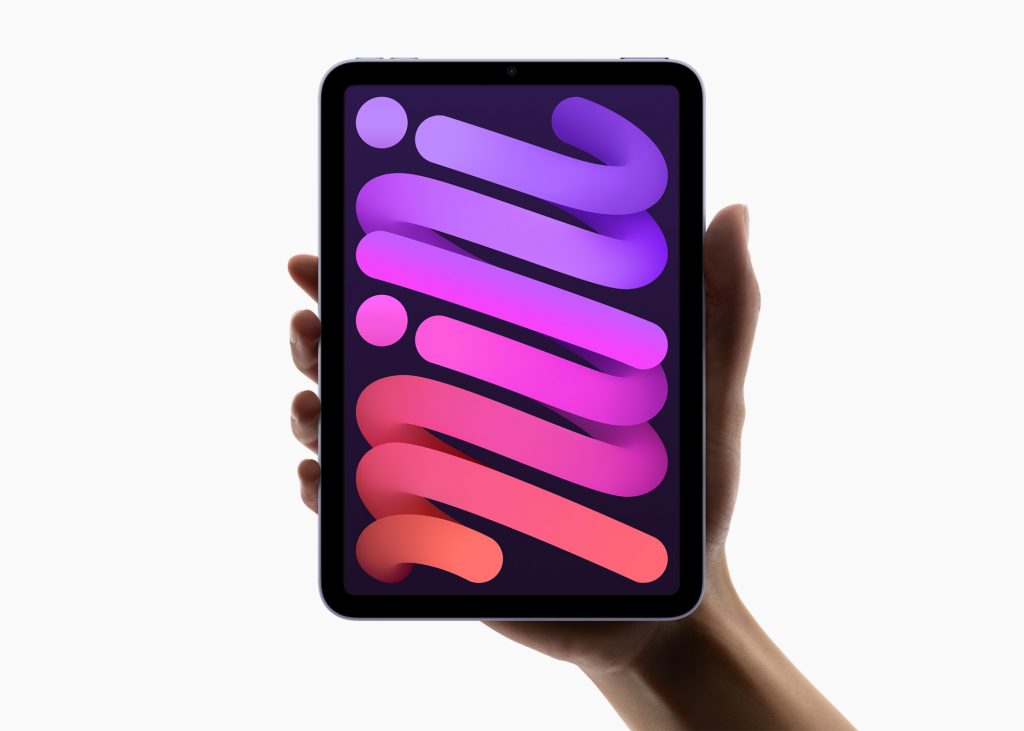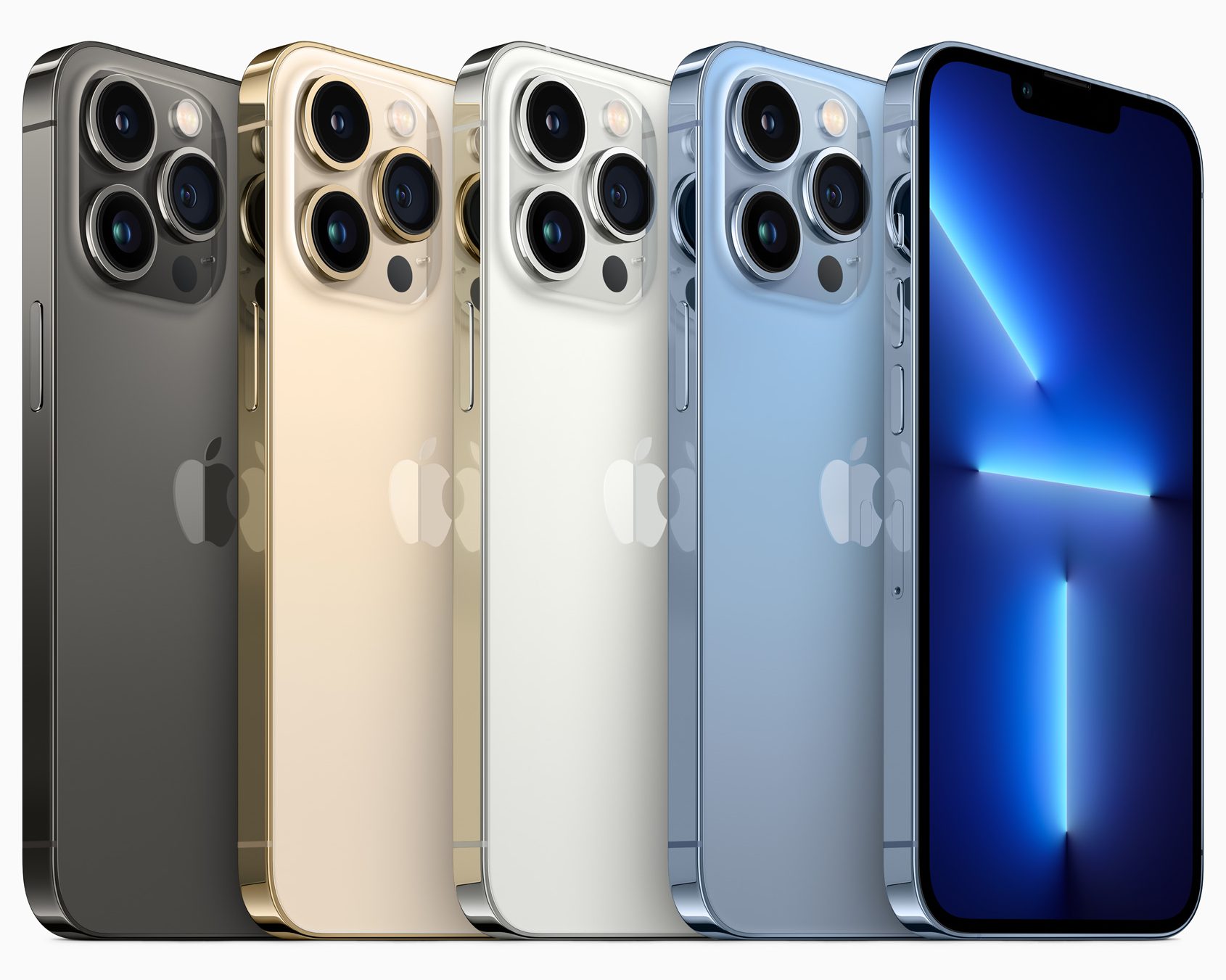
As the dust settles on the biggest Apple event of the year, we have the complete details on the latest iPad, Apple Watch, and of course the latest iPhone. This year we get the Apple A15 bionic chipset, new camera sensors and tricks, a new and improved iPad and iPad Mini, and lastly bit of a new design for the Apple Watch series 7.
We have a lot of new devices to breakdown, so let’s not waste any time and get right into it. First up let’s take a look at the new iPad line up
iPad

The Latest iPad is a rather small refresh that includes most of the same design characteristics. The included chipset is the A13 Bionic up from the A12 from last generation. This should give a decent performance uplift as the A13 is a fairly beefy chip.
The IPS display is still 10.2 inches with 1,620 x 2,160 pixels. There is a 8MP camera on the rear of the device with f/2.4 aperture and 31mm lens. The selfie is a wide angle (122˚) 12MP sensor with f/2.4 aperture. Other than that there isn’t much surrounding the new iPad. It supports the usual accessories, including the latest Apple Pencil.
Pricing for the new iPad starts at €399 and comes with 64GB of storage and cellular supported models continue starting €539. The iPad comes with USB Type-C cable and 20w wall charger in the box.
iPad Mini

The Latest iPad Mini has a new redesign with more emphasis on the display and less bezel. The liquid Retina IPS display has an 8.3inch panel with 1,488 x 2,266 resolution and 500 nits brightness. The TouchID has been moved to the power button on the top of the tablet. The display also supports the lastest Apple Pencil and snaps to the side of the device.
The internal specs include the latest Apple A15 Bionic with Hexa-core setup (2 Big cores and 4 Little cores) and 5-Core GPU. The A15 performance has yet to be detailed fully but pretty good chance it will be top tier. The iPad Mini has also made the jump to USB Type-C and thankfully there is a 20w charger in the box.
The 12MP camera on the rear of the device has dual-focus pixels and an f/1.8 aperture. The selfie is a wide angle (122-degree) 12MP sensor with f/2.4 aperture.
The starting price for the iPad mini is €569 and that gets you a WiFi only 64GB model. 5G is avaialble and that starts at €739 for the 64GB Model.
Apple Watch Series 7

The new Series 7 gets its own little redesign, and by that we mean the display is slightly larger with the bezel being slightly less. The glass is more rounded which adds to the durability as Apple states it – providing even more crack resistance than previous models.
The display size change has pushed Apple to increase UI elements across OS8, and in turn allow for easier control. This includes the addition of a swipe keyboard for typing, which is a first for Apple watch. The series 7 also gets IP6X rating for dust protection, and advertised 50m water resistance.
The Apple series 7 watch pricing Series 7 start at $399/€469 and arrives in a plethora of different colours and bands avaialble, with support for all previous bands still intact.
iPhone 13

The design has a nearly identical design to last years iPhone 12. We have the same aluminium frame with notch cut out. The notch has now shrunk for the first time, but not enough that it’s suddenly not noticeable. The phones keep the IP68 and lighting connector for another year and rolling.

The displays are both Super Retina OLED with XDR/HDR support. 800 nits brightness and 1200 nits peak brightness with official details below.
| Model | iPhone 13 | iPhone 13 Mini |
| Screen Size | 6.1 inches, 90.2 cm2 (~86.0% screen-to-body ratio) | 5.4 inches, 71.9 cm2 (~85.1% screen-to-body ratio) |
| Resolution | 1170 x 2532 pixels, 19.5:9 ratio (~460 ppi density) | 1080 x 2340 pixels, 19.5:9 ratio (~476 ppi density) |
The camera systems are identical on both devices with the main shooter being 12MP sensor with f/1.6 aperture, 26mm lens, 1.7µm size pixels with sensor-shift OIS. The ultra wide is another 12MP sensor with f/2.4 aperture and 120˚ degree field of view with the 13mm lens. Both phones include support for 4k@60fps and 1080p@240fps with various HDR support within, and support for Apples new Cinematic mode (details below)
The latest A15 Bionic chipset is inside both devices again with the same Hexa-Core setup (2 big and 4 little cores), along with 4GB of RAM. Apple provided no direct comparisons between last years A14, but did mention it was 50-percent faster than the competition, but far to vague to have any real meaning right now.
The base storage for the iPhone is now finally 128GB, with options for 256GB, and 512GB also avaialble. Pricing for the iPhone Mini starts at €799/$729 with the iPhone 13 starting at €899/$829. Both phones will be available in White, Black, Blue, Pink, and Red colours and pre-ordering starts now.
iPhone 13 Pro

The iPhone 13 Pro and Pro Max are Apples latest and greatest offerings. The devices that include all the sweet goodies that iPhone 13 has and some extra stuff to qualify for the Pro nomenclature. The biggest advantages being the Display and Camera’s
Apple fans will find it harder this year to tell the new iPhone 13 Pro models form last years from anything other than the notch (we mentioned it got a tiny bit smaller). Other than that, we have the same flat shiny aluminium frame and offset camera layout.
Chipset wise, you guessed it!, The latest A15 with 6GB of RAM for the Pro models. The Pro 13 and Pro 13 Max also have slightly larger batteries that is stated to offer 1.5/2.5hrs more battery life compared to iPhone 12 Pro and Pro Max respectively.
The display’s on the Pro models are both Super Retina OLED with XDR/HDR support, 120hz ProMotion, and 1000nits brightness (1200 nits peak). Their respective sizes and resolutions below. The new 120hz display supports variable refresh rate all the way down to 10hz, which should aid in battery consumption overall.
| Model | iPhone 13 Pro | iPhone 13 Pro |
| Size | 6.1 inches, 90.2 cm2 (~86.0% screen-to-body ratio) | 6.7 inches, 109.8 cm2 (~87.4% screen-to-body ratio) |
| Resolution | 1170 x 2532 pixels, 19.5:9 ratio (~460 ppi density) | 1284 x 2778 pixels, 19.5:9 ratio (~458 ppi density) |
The camera side of the business doesn’t offer any massive leaps, but comparatively we have all new larger sensors across the board with night mode support on all camera’s. Low light performance has been the main focus point.
Apple are again sticking with 12MP sensors across all camera’s for the iPhone Pro models. The main shooter has a 26mm lens with f/1.5 aperture, sensor-shift OIS, and a large 1.9µm pixel size. The Telephoto has a 77mm lens with f2/.8 aperture, OIS, and 3x optical zoom. Lastly the Ultrawide has a 13mm lens with f1/.8 aperture and 120 ˚. It also now supports PDAF and will effectively bring super close Macro shots to the iPhone.
Cinematic and ProRes

Cinematic mode allows for adding depth mapping to your videos. This essentially allows you to to modify focus/bokeh effects while filming and even after capture. The demo during the event showed recording quickly moving between subjects entering the frame. Cinematic mode will be support on all iPhone 13 devices.
Apple also announced that ProRes will be coming to iPhone 13 Pro models with a future update. ProRes will support 4k@30fps on all models, except for the 128GB storage version; which is limited to 1080p@30fps. No mention of why exactly, but file size seems to be the main contender. This also wont bode well for the now seriously lacking Lighting port which will cause some pretty extensive transfer times for moving ProRes footage to your computer, so like any future feature announcement , it might be worth waiting to for the fuller picture before choosing your storage option.
Pricing for the iPhone 13 Pro starts at €1,179/$999 for the 128GB storage offer, and the iPhone 13 Pro Max starts at €1,279/$1099 for the 128GB storage model. The most kitted out version is the iPhone 13 Pro Max 1TB version, and it comes in at €1,759/$1,599. Both models are available in Graphite, Gold, Silver, Sierra Blue and pre-ordering is already underway with devices set to arrive September 24th, although it looks like some delays are already hitting the Pro models and delivery dates are getting pushed to October in some regions.
